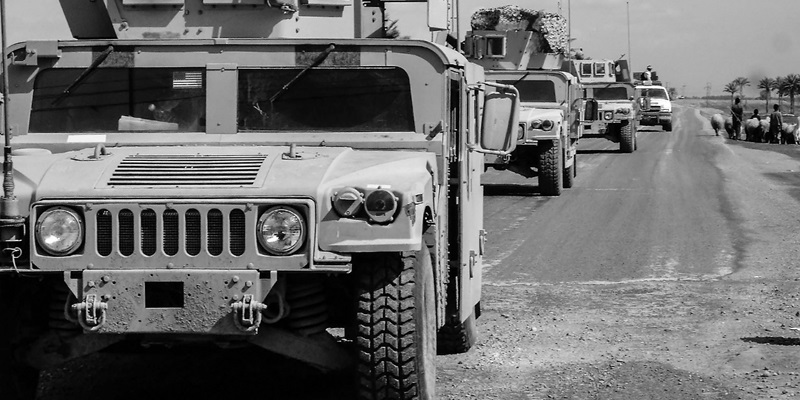AUKUS, an alliance between Australia, the UK, and the US, is advancing the use of AI and autonomous systems in military settings through the Trusted Operation of Robotic Vehicles in Contested Environments (TORVICE) trial. This trial symbolizes a significant stride towards integrating cutting-edge technology into warfare. With the evolving nature of military combat, AUKUS’s current focus is not just timely but strategic as it leverages the collective expertise of the UK armed forces and Dstl, along with their American and Australian partners. The emphasis on ensuring these robotic systems can operate reliably in disputed situations underlines the importance of technological superiority in future conflicts. This initiative reinforces the importance of the partnership in shaping contemporary military tactics and underscores the trio’s commitment to maintaining a technological edge in defense and security operations.
Autonomous Systems in Hostile Environments
The TORVICE trial has been essential in testing the endurance of robotic vehicles and their sensors amidst electronic warfare challenges, including GPS disruption and electronic attacks. The resilience of these systems is paramount, as they are destined to be an integral part of military operations. It’s not just about whether these systems can perform in ideal conditions, but whether they can withstand the unpredictable variables of a live combat environment. Analyzing the data gathered from such trials is invaluable for developing strategies, improving defense mechanisms, and ensuring that AI-driven systems are fail-safe in real-world scenarios.
Transformative Potential of Robotic Warfare
AUKUS nations are united in their view that autonomous technologies are set to revolutionize military operations. UAVs that can execute surveillance without endangering human pilots and land robots designed to defuse bombs showcase how AI is being integrated into defense strategies. These innovations serve as force multipliers, significantly lowering risks to personnel while expanding the military’s reach and effectiveness in various domains including air, land, sea, and cyber. The integration of these intelligent systems is reshaping the battlefield, presenting new tactical possibilities and enhancing the efficiency of military actions with unparalleled speed and accuracy. The advent of robotic warfare represents a significant shift in how future conflicts will be conducted, underscoring a transformative era in defense capabilities.
Collaborative Trials: A Stepping Stone for Military AI
The collaboration in trials like TORVICE is a vital stepping stone toward realizing the full potential of military AI. The unified approach in sharing expertise and pooling resources is what will ultimately achieve the heightened interoperability needed between the forces of participating nations. This shared progression is a direct result of the commitment articulated by AUKUS defense ministers to introduce advanced Resilient and Autonomous Artificial Intelligence Technologies (RAAIT) into military forces. Through continuous cooperation, AUKUS nations are not only fostering innovation but are also setting the stage for seamless integration of AI capabilities.
Enduring the Unpredictability of Combat
The TORVICE trial emphasizes the importance of durability for autonomous technologies in combat settings, particularly against sophisticated electronic warfare tactics. These systems must demonstrate their capability to persist and function effectively in spite of severe electronic disruptions. This is pivotal for military applications, as the resilience of AI systems to electronic interference remains a key concern. The trial’s findings are instrumental in illuminating the need for enhanced AI adaptability to such adversarial conditions. This knowledge is shaping the way military thinkers are planning for future wars, wherein AI could play a significant role in making critical decisions and managing complex operations. The development of AI that can withstand electronic attacks not only secures operational effectiveness but also potentially transforms the dynamics of military strategy and combat.
Deploying AI on the Battlefield
The results of the TORVICE trial underscore the considerable strategic options that autonomous technologies may provide to military commanders. With the capacity to manage vast battle spaces, AI promises an evolution in command and control tactics. This could lead to a paradigm shift in military engagements where operations are characterized by speed, efficiency, and complexity. The role AI is projected to play spans reconnaissance, logistics, and even offensive capabilities, potentially reshaping the way military strategies are developed and executed.
Joint Vision for Defense Readiness
The AUKUS trials mark a significant stride towards modernizing military preparedness for future combat scenarios. These exercises underscore a shared dedication among the United States, the United Kingdom, and Australia to develop technologies that will significantly enhance defense operations and provide strategic advantages, reflected in the concept of force multipliers. Such collaborations are crucial as they address the need for readiness in pivotal regions such as the Indo-Pacific and match the quickening pace of change in worldwide military dynamics.
By focusing on the intersection of technology and defense, the AUKUS partnership is not only fostering safer military procedures but is also ensuring that the frameworks established today will suffice for the security demands of tomorrow. This forethought is vital for maintaining a position of strength in an environment where geopolitical tensions and the character of warfare are rapidly transforming. Together, these nations are building a foundation for defense that is both resilient and forward-thinking, guaranteeing that they remain a step ahead in an era marked by constant evolution in the art and theater of war.

